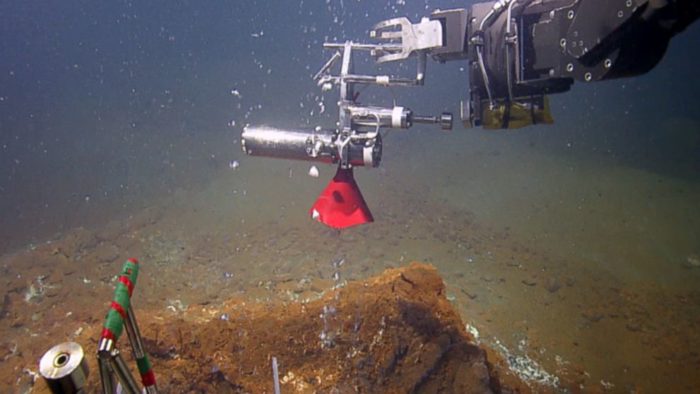ST GEORGE’S, Grenada, May 01 2017 – Disaster officials in Grenada said that the region’s only submarine volcano, Kick ‘em Jenny, showed “continuous activity” on Monday with at least “43 mostly low magnitudes volcanic earthquakes” over an 18 hour period.
A statement from the National Disaster Management Agency (NaDMA) noted that the agency is continuing to collaborate with the Seismic Research Centre (SRC), at the St. Augustine campus University of the West Indies (UWI) in Trinidad and Tobago to monitor activities at the Kick ‘em Jenny under water volcano.
NaDMA said it was “advised of continuous activities” on Monday and according to the fourth advisory from the SRC/UWI “during the period 5:45 p.m. on 30th April to10:41 a.m. on 1st May, the activity rate has remained virtually the same with 43 mostly low magnitudes -in the range 1.5-2.3 – volcanic earthquakes associated with this unrest episode at the Kick ‘em Jenny volcano.
“There were a few larger events with the largest at magnitude 3.0. UWI/SRC will continue to monitor and update NaDMA as the activity warrants.”
On Sunday, the UWI/SRC recorded a high amplitude signal, lasting about 25 seconds, on one of the Grenada stations. The signal was also recorded on a station in Montserrat.
“This signal follows an increase in the number of background events associated with the Kick ‘em Jenny volcano,” NaDMA said, confirming reports that persons in the St Patrick’s area have reported feeling tremors.”
Kick ‘em Jenny is an active submarine volcano or seamount on the Caribbean Sea floor, located 8 km (5 mi) north of the island of Grenada and about 8 km (5 mi) west of Ronde Island in the Grenadines.
The volcano has erupted on at least 12 occasions between 1939 and 2001. A submersible survey in 2003 detected a crater with active fumaroles releasing cold and hot gas bubble. Signs of elevated seismicity began July 11, 2015, and on July 23 a strong continuous signal was recorded.
NaDMA said that the alert level remains “YELLOW” and that means that “vessels should observe a 1.5 km/0.93 mile exclusion zone.
“However, as a precautionary measure, the marine community is advised to continue observing the secondary exclusion zone of 5 km/3.1 miles. The SRC has advised that heightened alert is
necessary for the exclusion zone.”
NaDMA is also advising the general population that the official advisories on this matter, and all other disaster related matters will come directly from the agency and urged also “the responsible use of social media.
“The population can rest assured that SRC continues to monitor the system and NaDMA will continue to liaise with SRC and provide updates,” NaDMA added.
Story Credit: Caribbean News Service










